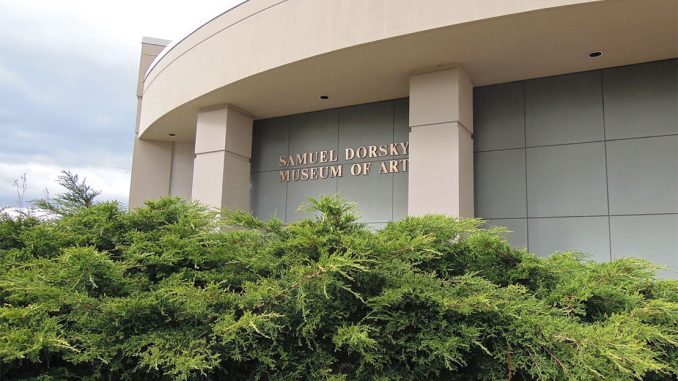
College is great because unlike high school, studying isn’t strictly devoted to the classroom. We’re not expected to spend our entire day locked inside, regurgitating information. The higher education model is completely different. Now, classes are only a couple hours a day, and sometimes with major gaps between them. If you live on campus, it’s easy to just go back to your dorm room, but for kids living off-campus to commute, these breaks are dreaded. What to do to fill the time is a constant question students ask themselves. It’s never enough time to go back home, and even if you did live close enough to campus, we all know once our foot goes through the front door, we’re not coming out.
So what should we do? The campus is home to a lot of interesting resources we can use. The Samuel Dorsky Museum of Art is our campus’s art museum whose mission from their website is to “create art experiences that spark curiosity, critical thinking and delight, connecting and serving the University and the diverse communities of our region. We are a hub for the art and artists of the Hudson Valley: free, open and accessible to all.” The museum constantly has rotating exhibit; on display now is “Purple Haze: Art and Drugs Across the Americas,” which was curated by Estrellita B. Brodsky with Raúl Martínez and runs from Sept. 9-Dec. 10, alongside “Notes for Tomorrow,” curated by Independent Curators International and on display from June 17-Nov. 12.
These two exhibits are really interesting, with “Notes for Tomorrow” showcasing art that came out of the pandemic; the feeling of seeing art matching up with the reality around us helps bring context to our lives. The feeling of seeing these pieces evoked a sense of anxiety with a touch of familiarity. “Purple Haze” completely transformed the exhibit space. If you’re a regular Dorsky patron, you can see how the space is constantly changing to accommodate the new artwork that is being rotated around. The artwork from this exhibit “examines the Americas’ ambiguous relationship with drugs and their representation in the media and public imagination.” My favorite piece was the immersive art piece that took up space in its own gallery. The room was dark and filled with cots. There were projects displaying images on the walls and music syncing up. Overall, the space is a little disorienting, but that’s clearly the point. Accompanied by each cot, is a nail file for viewers to use while listening to the surround sound and look at the moving images. The point of these elements together, is to evoke the feeling one gets while on drugs: confused yet comfortable at the same time.
Sometimes, if you’re not an art student, art galleries can be overwhelming. Eoin Dennis, a fourth year painting and drawing major and gallery attendant, offered some advice: “come to the gallery when you’re in a good headspace. Do whatever you need to do beforehand to get you into that headspace and just come in and look at the art in an appreciatory way.” When coming into these spaces, you don’t need to learn every single detail. You just have to find something that speaks to you.
The museum just opened up a new room, The Seminar Room, for visitors to come in and take a break from learning about art and actually produce art themselves. “In terms of this gallery, not necessarily this exhibit, but this gallery space, because we have this new Makerspace, I think that room is going to be a great tool for people that get overwhelmed with what they’re seeing and need to stare off and get into the headspace of art,” Dennis added. The space was created by Zachary Bowman, manager of education and visitor experience. This space is open during the regular operating hours of the museum, Wednesday-Sunday from 11am-5pm.
